What is genetic testing and why should it be done?
Genetic awareness plays a pivotal role in safeguarding individual health and enhancing population wellbeing. Genetic testing can facilitate early diagnosis and prevention by identifying genetic variations predisposing individuals to hereditary diseases or health conditions. Furthermore, such tests empower healthcare professionals to prescribe targeted and personalised treatments for each patient. At a societal level, genetic literacy can contribute to reducing the burden of disease, improving healthcare programmes, and elevating the overall health of the population.

Genetic Testing and the Fundamental Building Blocks of Genetics: Genes and Chromosomes
Genes and chromosomes form the foundational building blocks of an organism’s genetic makeup, encoding all the necessary information for bodily functions. Genes, the fundamental units of heredity, are composed of DNA strands.
Each gene contains instructions that dictate to cells which proteins to produce, and these proteins are instrumental in regulating bodily functions, constructing cellular structures, and controlling chemical activities. Genes are responsible for a multitude of traits, ranging from hair and eye colour to susceptibility to certain diseases.
Chromosomes are structures that compact and organise genes. A typical human possesses 46 chromosomes, arranged in 23 pairs; half of these are inherited from the father, and the other half from the mother.
Chromosomes reside within the cell nucleus and are passed on to subsequent generations during cell division. Genetic testing, through the analysis of genes and chromosomes, can identify genetic variations that influence an individual’s health and traits. In essence, these genetic structures provide the biological blueprint for an organism’s growth and maintenance.

Genetic Testing: Its Significance and Impact on Individual and Public Health
Introduction: The Concept of Genetic Testing Genetic testing involves processes designed to identify alterations and patterns in an individual’s genetic material, encompassing DNA, genes, and chromosomes. These tests can yield invaluable insights into an individual’s health status and susceptibility to hereditary diseases.
The Role of Genes and Chromosomes in Genetic Testing
Genes, the fundamental units of heredity, are embedded within DNA structures and provide the instructions necessary for protein synthesis. Proteins, in turn, govern numerous biological processes within the body. Chromosomes, on the other hand, are structures that compact and organise genes. By examining genes and chromosomes, genetic testing can detect alterations and abnormalities that may impact an individual’s health.
Types of Genetic Tests
Genetic tests can be categorized into several types:
- Predictive testing: These tests identify an individual’s risk of developing genetic diseases, particularly in individuals with a family history.
- Diagnostic testing: These tests are used to confirm or rule out a specific disease.
- Prenatal testing: These tests can detect genetic abnormalities in a developing fetus.
- Research testing: These tests are typically conducted in scientific research to investigate specific genes and their roles in diseases.
Benefits of Genetic Testing
Genetic testing offers numerous advantages, including:
- Early disease detection: By identifying genetic alterations, individuals can take preventive measures promptly.
- Personalized treatment: Healthcare providers can prescribe targeted treatments based on genetic test results.
- Health awareness: Genetic testing empowers individuals with knowledge about their health status, enabling them to make informed life choices.
Challenges and Ethical Considerations
Despite its numerous benefits, genetic testing is accompanied by challenges and ethical considerations. Concerns related to the privacy of genetic information and the psychological impact of test results can pose significant challenges for individuals and families.
Conclusion: The Importance of Genetic Testing in Improving Health
Genetic testing is a powerful tool for identifying and managing health risks. These tests not only empower individuals to make informed decisions about their health but also contribute to improving public health programs and reducing the burden of disease. Consequently, it is imperative to promote awareness and access to genetic testing within communities so that individuals can fully benefit from these valuable tools.
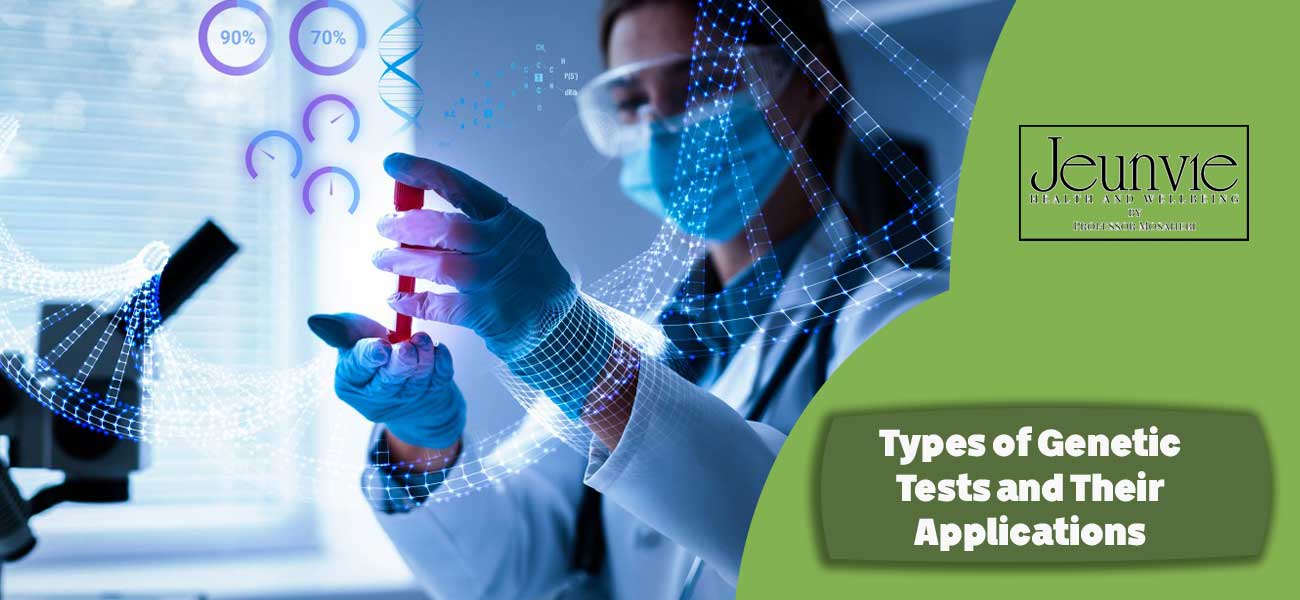
Types of Genetic Tests and Their Applications
Genetic testing is conducted using various methods, each possessing its unique applications and advantages. This text compares the different types of genetic tests, ranging from targeted single variant testing to comprehensive genomic testing.
Targeted Single Variant Testing
This type of test identifies specific changes in a particular gene. It is commonly used to diagnose specific hereditary diseases or to identify genetic carriers. The primary applications include:
Diagnosing hereditary diseases: Such as cystic fibrosis or muscular dystrophy.
Identifying carriers: Individuals can ascertain whether they carry a specific genetic mutation that could be passed on to future generations.
- Single Gene Testing
These tests examine a specific gene to assess the risk of developing genetic diseases. - Early diagnosis: These tests assist doctors in diagnosing hereditary diseases at an early stage.
- Genetic counselling: These tests provide information regarding the risk of disease in family members.
- Panel Testing
These tests involve examining multiple genes associated with a specific disease. - Comprehensive information: These tests help identify diseases that may be caused by multiple gene mutations.
- Identifying multiple diseases: They can detect several genetic disorders simultaneously.
- Chromosomal Genetic Testing
These tests identify large-scale changes in chromosomes. - Karyotyping: This test is used to identify chromosomal abnormalities, such as Down syndrome.
- Fluorescence in situ hybridisation (FISH) analysis: This technique helps identify specific changes in chromosomes.
- Molecular Genetic Testing
These tests examine changes at the molecular level and involve more complex techniques such as sequencing. - Whole exome sequencing and whole genome sequencing: These tests can identify genetic changes on a larger scale and provide detailed information about an individual’s genes.
- Predictive Testing
These tests are utilised to assess the risk of developing hereditary diseases in individuals without clinical symptoms. - Health awareness: These tests enable individuals to become aware of their health status and take preventive measures.
Genetic tests, with their various types and applications, are powerful tools for diagnosing, preventing, and managing genetic diseases. The choice of the appropriate test depends on individual needs, family history, and medical advice. With ongoing advancements in genetic science, genetic testing is poised to play an increasingly significant role in improving both individual and public health.

Advanced Techniques in Genetic Testing: From Karyotyping to Whole Genome Sequencing
Introduction
Genetic testing employs advanced techniques to identify and analyse genetic variations within an individual. These methods can provide valuable insights into a person’s health and susceptibility to inherited diseases. This text will explore key techniques such as karyotyping, fluorescence in situ hybridisation (FISH), and whole genome sequencing (WGS).
Karyotyping
Karyotyping is a chromosomal analysis technique used to identify chromosomal abnormalities. It involves the following steps:
- Sample Collection: A sample, typically blood or tissue, is collected from the individual.
- Chromosome Staining: Chromosomes are stained with specific dyes to visualise their patterns and structures.
- Analysis: Using a microscope, chromosomal patterns are examined and abnormalities identified. This test is particularly useful in diagnosing disorders such as Down’s syndrome and other genetic abnormalities.
Fluorescence in Situ Hybridisation (FISH)
FISH is an advanced technique utilised to locate specific genes and chromosomal abnormalities. This method involves:
- Using Fluorescent Probes: Specific probes that bind to particular DNA regions are employed to identify the genetic areas of interest.
- Fluorescence Microscopy: After probe binding, the sample is examined under a fluorescence microscope to detect changes and abnormalities.
- Applications: This technique is used for cancer diagnosis, chromosomal abnormalities, and genetic research.
Whole Genome Sequencing (WGS)
WGS is an advanced technique that entails analysing the entire DNA sequence of an individual. This involves:
- Sample Collection: Biological samples are collected from the individual.
- Sequencing: Advanced techniques are used to determine the DNA sequence. This may involve next-generation sequencing or other methods.
- Data Analysis: Utilising sophisticated software, the obtained data is analysed to identify genetic variations and the likelihood of developing diseases.
Advanced genetic testing techniques, such as karyotyping, FISH, and WGS, serve as powerful tools for identifying and managing inherited diseases and genetic abnormalities. These techniques enable healthcare providers to make more accurate diagnoses and develop appropriate treatment plans. With ongoing advancements in genetic science, these methods will increasingly play a vital role in enhancing individual and public health.
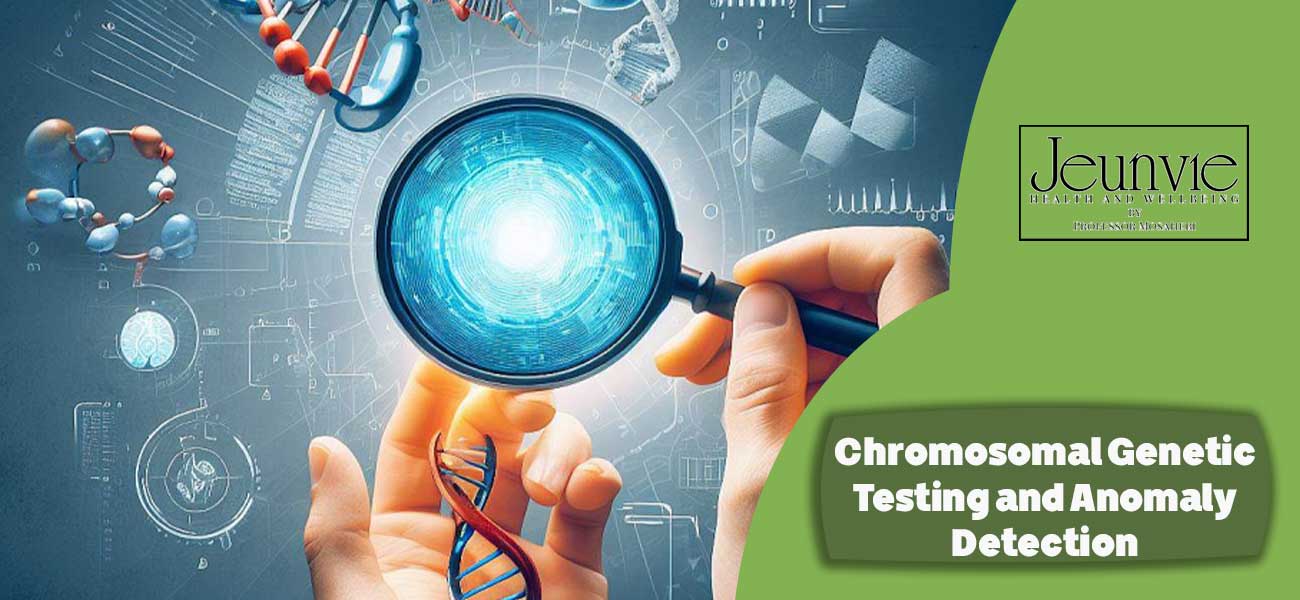
Chromosomal Genetic Testing and Anomaly Detection
Chromosomal genetic tests are invaluable tools for identifying alterations and abnormalities in chromosomes that can lead to genetic disorders. Two primary techniques employed in this field are karyotyping and fluorescence in situ hybridisation (FISH).
1. Karyotyping
Definition and Process:
Karyotyping is a laboratory technique used to evaluate the size, shape, and number of chromosomes in a sample. It involves the following steps:
- Sample Collection: Typically, a blood or tissue sample is obtained.
- Cell Culture: Cells are grown in a laboratory to encourage cell division.
- Chromosome Staining: Chromosomes are stained with special dyes to render them visible under a microscope.
- Microscopic Analysis: The stained chromosomes are arranged and paired to create a karyotype, which is a visual representation of an individual’s complete set of chromosomes.
Applications:
- Detecting Chromosomal Abnormalities: Karyotyping is utilised to identify conditions such as Down syndrome (trisomy 21), Turner syndrome, and Klinefelter syndrome.
- Investigating Infertility: It can assist in identifying chromosomal abnormalities that may contribute to fertility issues.
- Monitoring Cancer: Karyotyping can be employed to detect chromosomal changes associated with cancer.
2. Fluorescence In Situ Hybridisation (FISH)
Definition and Process:
FISH is a more specific technique used to locate and visualise specific DNA sequences on chromosomes. It involves:
- Probe Design: Fluorescently labelled probes are designed to complement specific DNA sequences.
- Hybridisation: The probes bind to their complementary sequences on the chromosomes.
- Microscopic Analysis: The sample is examined under a fluorescence microscope to detect fluorescent signals, indicating the location of the target DNA sequences.
Applications:
- Detecting Microdeletions and Microduplications: FISH can identify small-scale chromosomal deletions or duplications that may not be visible with karyotyping.
- Identifying Specific Translocations: It can detect rearrangements of chromosomal material.
- Monitoring Cancer: FISH can be utilised to detect specific genetic changes associated with cancer, such as gene amplifications or deletions.
Comparison of Karyotyping and FISH
| Feature | Karyotyping | FISH |
|---|---|---|
| Resolution | Detects large-scale changes | Detects smaller-scale changes and specific gene locations |
| Time | Longer turnaround time | Faster turnaround time |
| Cost | Generally less expensive | Can be more expensive |
| Information Provided | Overall chromosomal structure | Specific gene or chromosomal region |
Click to read this article : Genetic counseling
Both karyotyping and FISH are essential tools in the field of genetics. Karyotyping provides a comprehensive overview of an individual’s chromosomal makeup, whereas FISH offers a more targeted approach for detecting specific genetic alterations. The choice of technique depends on the clinical question being asked and the suspected genetic disorder. Advances in genetic technologies continue to refine these methods, leading to more accurate and efficient diagnoses of genetic disorders.
pic
Gene Analysis: From Single Gene Tests to Gene Panels
Gene analysis is a critical aspect of genetics that involves identifying and examining variations in DNA and genes. This process enables healthcare professionals and researchers to gather crucial information about an individual’s health and the risk of developing hereditary diseases. This text will delve into single gene tests, gene panels, and targeted analyses.
1. Single Gene Tests
Single gene tests examine a specific gene to identify genetic alterations within that gene. These tests are typically conducted in the following circumstances:
- Diagnosing hereditary diseases: These tests assist healthcare providers in diagnosing conditions such as cystic fibrosis or muscular dystrophy by identifying mutations in the associated genes.
- Genetic counselling: Single gene tests provide valuable information about the risk of disease within families, particularly for individuals with a family history of a specific condition.
2. Gene Panels
Gene panels comprise a group of genetic tests that examine multiple genes associated with a particular disease or group of diseases. These analyses offer specific advantages:
- Comprehensive information: Gene panels can identify diseases caused by mutations in several genes, providing a more thorough understanding of an individual’s health status.
- Identifying multiple disorders: These tests can simultaneously detect multiple genetic disorders, aiding healthcare providers in reaching a more accurate diagnosis.
3. Targeted Analyses
Targeted analyses focus on specific genetic variations that may impact an individual’s health or function. These methods typically include:
- Predictive testing: These tests assess the risk of developing hereditary diseases in individuals without any current symptoms.
- Developing personalised treatments: By identifying specific genetic variations, healthcare providers can tailor treatments to an individual’s unique genetic makeup.
Gene analysis, through single gene tests, gene panels, and targeted analyses, provides invaluable tools for diagnosing and managing genetic diseases. These methods empower healthcare professionals and researchers to gain a deeper understanding of an individual’s health and make more informed treatment decisions. In modern medicine, these analyses play an increasingly significant role in improving quality of life and public health.
Click to read this article : Genetic counseling
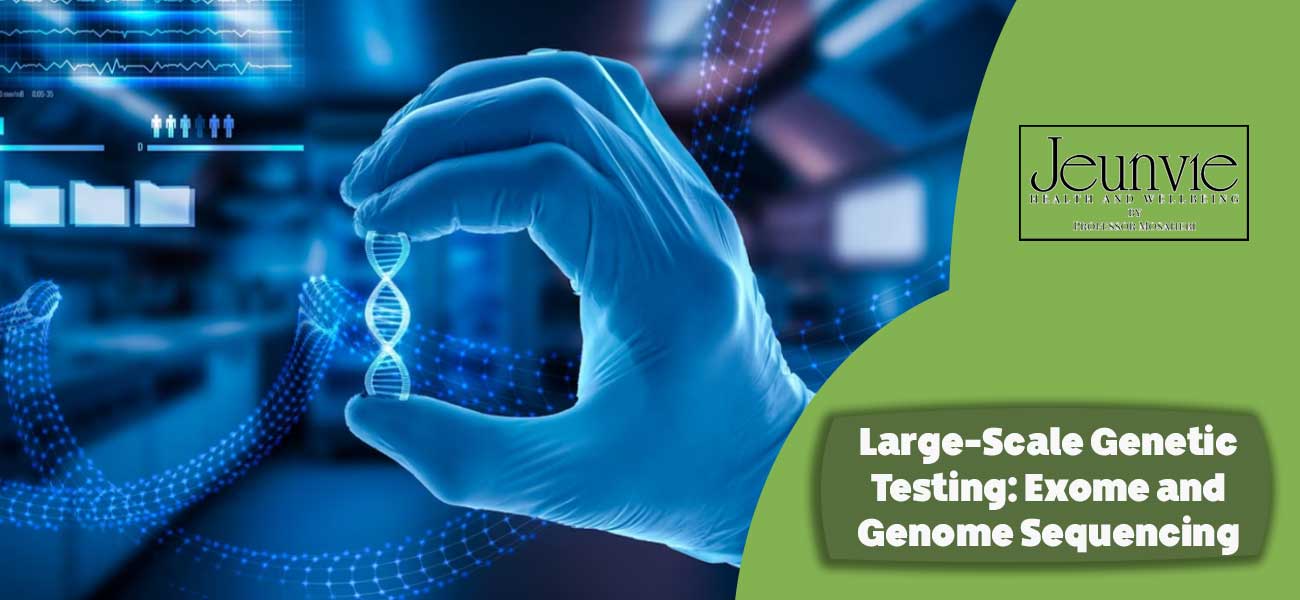
Large-Scale Genetic Testing: Exome and Genome Sequencing
Large-scale genetic testing, particularly whole exome sequencing (WES) and whole genome sequencing (WGS), has revolutionised medical diagnostics and improved public health. These methods enable a more comprehensive and accurate analysis of genetic information, facilitating the identification of genetic disorders and diseases.
Whole Exome Sequencing (WES)
Whole exome sequencing focuses on analysing all exons (the protein-coding regions of genes) within a genome. This technique allows researchers and clinicians to:
- Identify mutations: By concentrating on the 1-2% of the genome that encodes proteins, researchers can pinpoint mutations linked to diseases.
- Enable early diagnosis: These tests are particularly effective in detecting rare genetic disorders that may manifest in the early stages of disease.
Whole Genome Sequencing (WGS)
Whole genome sequencing is a more comprehensive approach that analyses all genetic information in an individual. The advantages of WGS include:
- More comprehensive data: This method provides a more complete dataset compared to WES, as it encompasses both coding and non-coding regions of DNA.
- Multidimensional analyses: Given that WGS encompasses all genetic information, it facilitates the identification of various types of mutations and abnormalities, enabling more complex analyses.
Impact on Medical Advancements
Large-scale genetic testing can significantly impact medical treatments and prevention strategies:
- Personalised medicine: By identifying specific genetic variations, healthcare providers can prescribe treatments tailored to an individual’s unique genetic makeup.
- Clinical research: These methods assist researchers in gaining a deeper understanding of disease mechanisms and treatment responses.
Large-scale genetic testing, such as whole exome and whole genome sequencing, serves as powerful tools for diagnosing and managing diseases. These methods empower healthcare professionals and researchers to conduct more in-depth analyses of an individual’s health and develop more effective treatments. As genetic science continues to advance, the role of these tests in improving quality of life and public health will only grow.
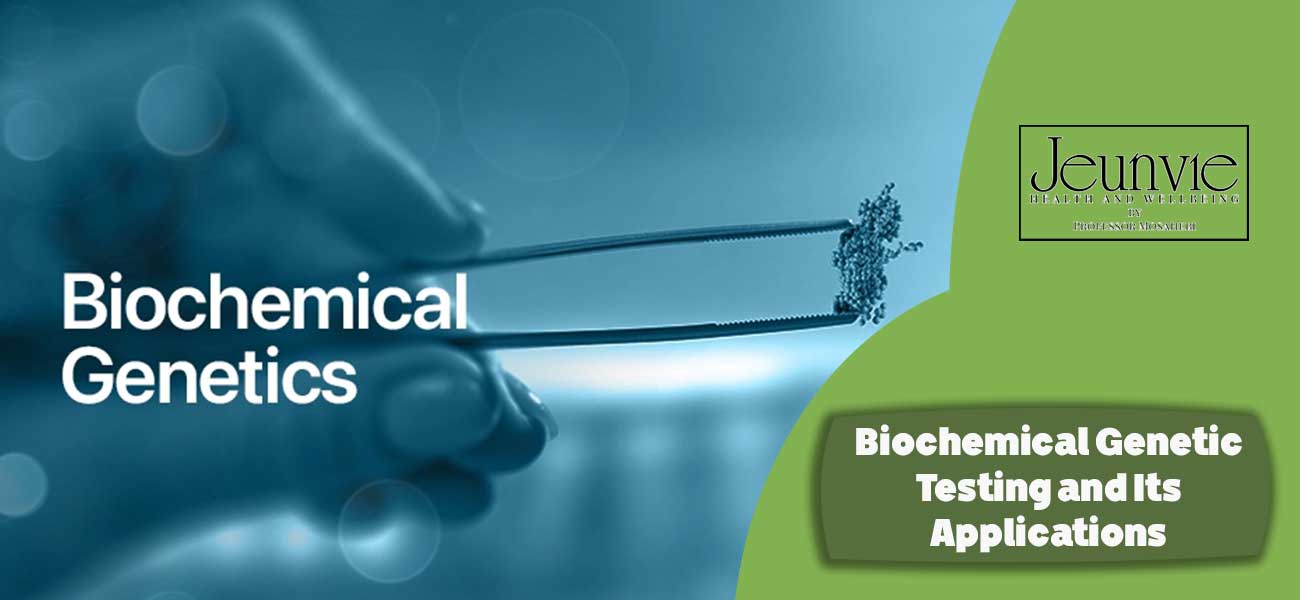
Biochemical Genetic Testing and Its Applications
Biochemical genetic testing is a pivotal tool in the diagnosis and management of metabolic disorders. By analysing the body’s chemical components, these tests can identify genetic disorders that directly impact metabolism and biochemical functions. This text will explore the methods and applications of these tests.
Definition of Biochemical Genetic Testing
Biochemical genetic testing involves the analysis of proteins, enzymes, and other biochemical molecules within the body. These tests are particularly effective in identifying metabolic disorders and assessing the function of critical biochemical systems.
Diagnosis of Metabolic Disorders
Metabolic disorders can arise from genetic abnormalities that affect the production of specific enzymes and proteins. Biochemical tests can be beneficial in the following ways:
- Identifying Genetic Disorders: These tests can help diagnose conditions such as phenylketonuria, hypothyroidism, and blood sugar disorders.
- Determining Enzyme Levels: Measuring enzyme and protein levels can indicate specific metabolic disorders. For instance, low levels of certain enzymes may signify hereditary diseases.
Clinical Applications
Biochemical genetic testing finds applications in various medical fields:
- Disease Prevention and Management: Early detection of metabolic disorders allows healthcare providers to implement management and treatment strategies.
- Genetic Counselling: Results from these tests can provide valuable information to individuals and families regarding genetic risks and hereditary diseases.
Biochemical genetic testing is a vital tool in the diagnosis and management of metabolic disorders. These tests can identify genetic disorders and enable healthcare providers to develop effective treatment plans tailored to each patient’s unique condition. As genetic and biochemical sciences advance, these tests will play an increasingly significant role in improving public health and quality of life.
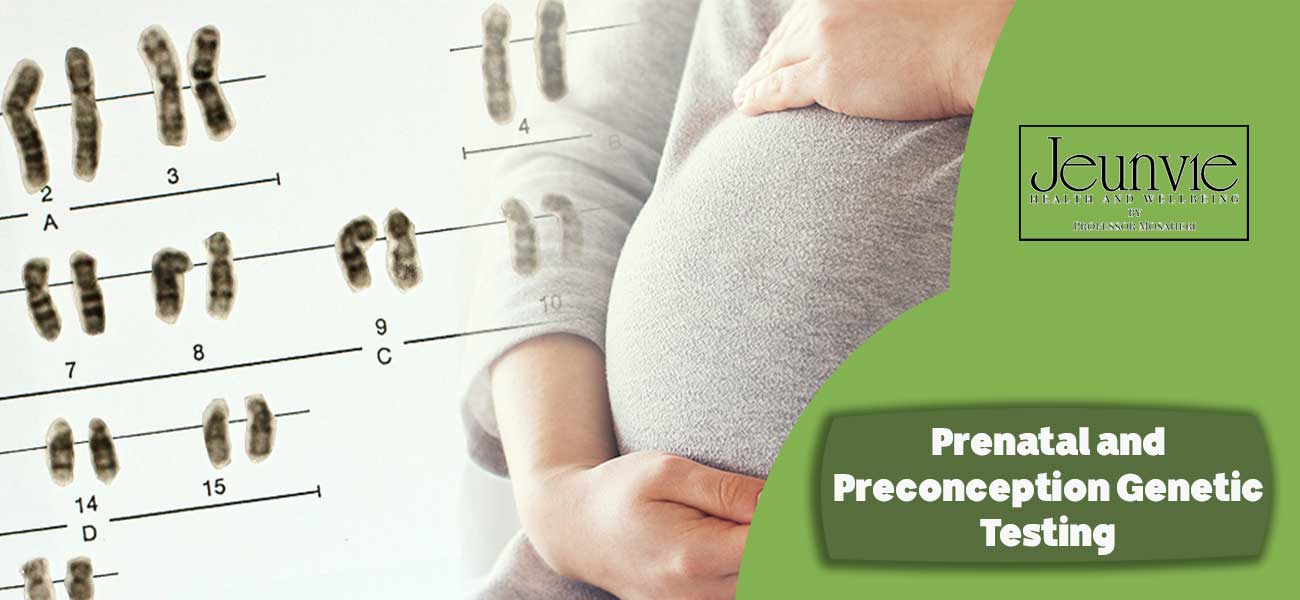
Prenatal and Preconception Genetic Testing
Prenatal and preconception genetic testing serves as a crucial tool for identifying genetic disorders and abnormalities in a developing fetus. These tests empower parents and healthcare providers to make informed decisions regarding the health of the unborn child. This text will examine various pregnancy-related tests, including NIPT, PGD, and predictive testing.
Non-Invasive Prenatal Testing (NIPT)
Definition and Method:
NIPT is a straightforward blood test performed during pregnancy. It screens for chromosomal abnormalities, such as Down syndrome (trisomy 21). NIPT operates by analysing fetal DNA present in the mother’s blood.
Advantages:
- High Accuracy: NIPT generally offers a high level of accuracy in detecting chromosomal abnormalities.
- Non-Invasive: This test poses no risk to the fetus and is straightforward to perform.
Preimplantation Genetic Diagnosis (PGD)
Definition and Method:
PGD is conducted during in vitro fertilisation (IVF). After embryos are created, one or more cells are extracted from each embryo for genetic testing to screen for genetic disorders or inherited conditions.
Advantages:
- Identifying Genetic Disorders: PGD can detect conditions such as cystic fibrosis and X-linked disorders.
- Selecting Healthy Embryos: This test allows for the selection of healthy embryos for transfer to the uterus.
Predictive Testing
Definition and Method:
These tests assess the risk of developing inherited diseases in a fetus. They may involve blood tests or more comprehensive genetic analyses.
Advantages:
- Understanding Genetic Risks: These tests can identify the risk of specific disorders, enabling parents to plan accordingly.
- Genetic Counselling: Results from these tests can lead to genetic counselling, providing valuable information about options for managing genetic risks.
Prenatal and preconception genetic tests are invaluable tools for assessing fetal health and identifying genetic disorders. These tests empower parents to make informed decisions regarding their child’s health and assist healthcare providers in delivering optimal care. As genetic science continues to advance, these tests will play an increasingly significant role in enhancing maternal and fetal health.
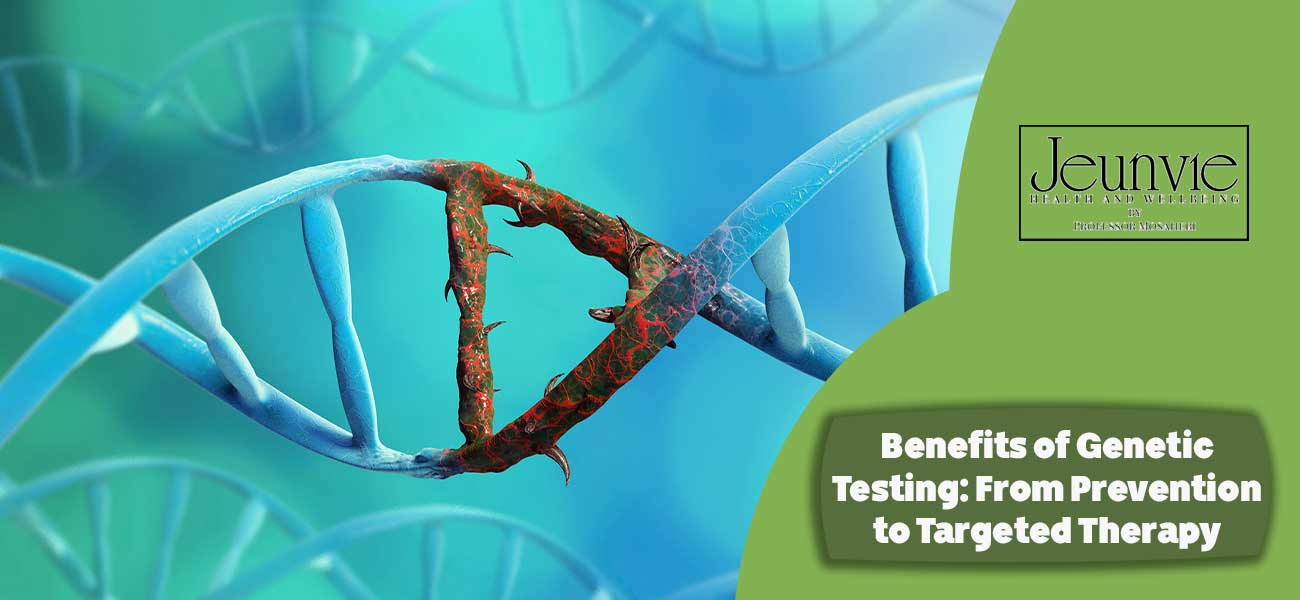
Benefits of Genetic Testing: From Prevention to Targeted Therapy
Genetic testing has emerged as an indispensable tool in the diagnosis and management of diseases, offering numerous benefits. These tests can play a significant role at various stages of healthcare, from prevention to targeted therapy. This text will highlight some of the key advantages of genetic testing.
Early Diagnosis
Genetic testing enables the early detection of genetic disorders and associated diseases. Early diagnosis empowers healthcare providers to prevent disease progression and deliver improved patient care. For instance, early cancer detection through genetic testing allows for timely preventive measures.
Prevention
Genetic testing can assist individuals in identifying their risk of developing specific diseases. This information empowers individuals and their families to make informed decisions regarding lifestyle choices, diet, and preventive healthcare measures. For example, individuals at risk of heart disease or diabetes can take proactive steps to mitigate their risk.
Treatment Planning
Genetic testing aids healthcare providers in determining the most effective treatment options. By identifying specific genetic disorders, healthcare providers can design personalised treatment plans tailored to each patient’s unique needs. This personalised approach leads to significant improvements in the quality of life for patients.

Final Thoughts
Genetic testing, with its key benefits of early diagnosis, prevention, and treatment planning, significantly contributes to the enhancement of healthcare quality and public health. As advancements in genetic sciences continue, genetic testing is expected to play an increasingly pivotal role in the future of medicine and targeted therapies.
Reviews
Contact
- Our Clinic : 2 North Terrace, South Kensington SW3 2BA
- phone:(020)75899321
- email:Contact@lamaisonmedicale.co.uk
Our Partners

2 North Terrace, South Kensington, London SW3 2BA
- Copyright 2025 Jeunvie Health and Wellbeing
